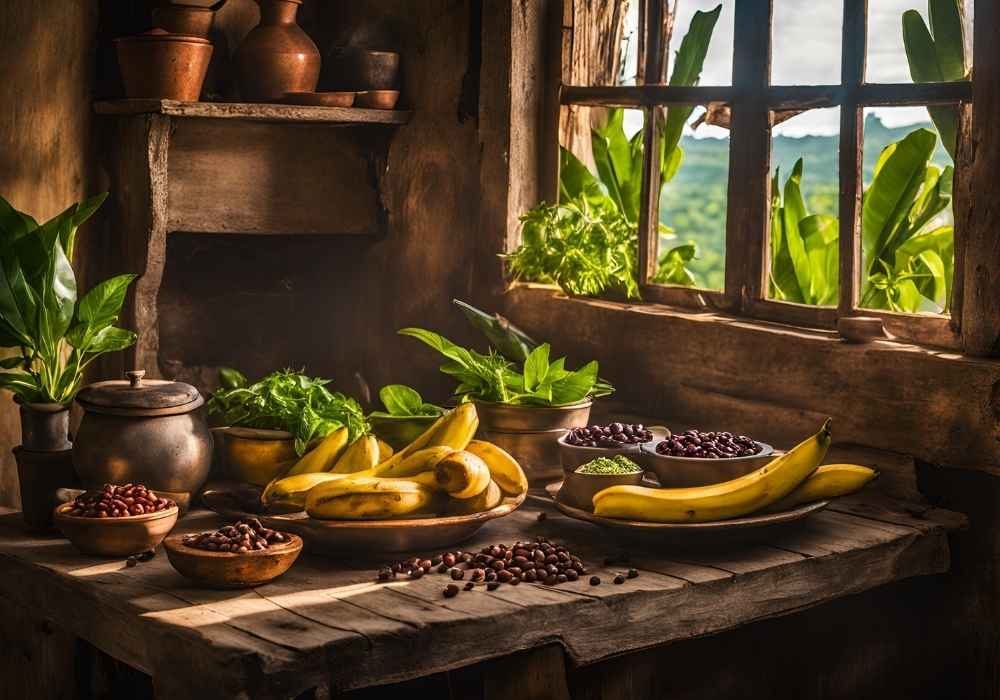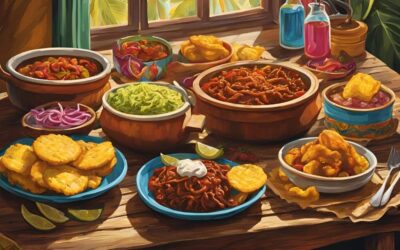Cuban food is more than just a meal—it’s a story of culture, history, and a blend of traditions that reflect the island’s vibrant identity. For food enthusiasts, travelers, or anyone intrigued by Cuban culture, exploring Cuban cuisine is a sure way to connect with the soul of this Caribbean paradise.
This blog will take you on a flavorful journey through Cuban food. Discover its rich history, staple ingredients, iconic dishes, and food’s role in Cuban culture. Prepare to be inspired, whether planning a trip to Cuba, hosting a Cuban-themed dinner, or simply curious about this delightful cuisine.
What Makes Cuban Food Unique?

Cuban food is all about fusion and flavor. Rooted in a blend of Spanish, African, Taino, and Caribbean culinary traditions, it offers a harmonious mix of robust spices and fresh ingredients. Its uniqueness comes from the influences of these cultures, brought together through centuries of trade, colonization, and migration.
At its core, Cuban food emphasizes simplicity and balance. It’s not overly spicy like Mexican cuisine, but it’s packed with flavor thanks to ingredients like garlic, cumin, oregano, and citrus, which create its characteristic zesty profile.
The Essential Ingredients of Cuban Cuisine

Before we explore specific dishes, it’s worth understanding the essential ingredients that define Cuban cooking. These elements showcase the island’s agricultural heritage and its adaptation of different culinary traditions:
Rice and Beans: A foundation of many Cuban dishes, rice, and beans represent the influence of African and Caribbean cultures. Black beans (frijoles negros), in particular, are a staple.
Plantains: Served fried, mashed, or as chips, plantains are a versatile component of Cuban cuisine.
Pork: Pork is central to Cuban food, whether roasted for lechón asado or used in smaller dishes like croquetas.
Seafood: Cuba’s coastal geography allows it to fully utilize fresh fish and shellfish in its seafood dishes.
Citrus Fruits (lime, orange, sour orange): These are used for marinades such as the famous mojo and balancing flavors.
Spices (cumin, bay leaves, garlic, oregano): Cuban dishes feature these spices subtly to enhance flavors without overpowering them.
Now that we’ve covered the essentials, it’s time to discuss the iconic dishes.
Must-Try Cuban Dishes
1. Ropa Vieja
Ropa Vieja, Cuba’s national dish, translates to “old clothes” because of its shredded appearance. This slow-cooked dish features tender beef in a tomato-based sauce infused with garlic, onions, cumin, and bell peppers, often served with rice and black beans. Legend has it that this dish finds its roots in Spanish settlers who needed a hearty meal from simple ingredients.
2. Lechón Asado
Few meals define Cuban celebrations better than Lechón Asado, or roasted pork. The pork is marinated in a flavorful blend of mojo (a citrus-garlic sauce) before being roasted to achieve tender meat with a crispy skin. It’s commonly prepared during family gatherings and holidays, accompanied by plantains and yuca.
3. Moros y Cristianos
Also known as “Moors and Christians,” this dish is a mix of black beans (representing the Moors) and white rice (symbolizing Christians). It’s a flavorful side dish seasoned with onions, garlic, and bell peppers, and it often accompanies meat-based entrees.
4. Yuca con Mojo
Yuca, a starchy root vegetable, is boiled and topped with mojo, a zesty sauce made from garlic, sour orange, and olive oil. It’s simple but packed with flavor and perfectly complements meat dishes.
5. Cubano Sandwich
This globally recognized Cuban delight is more than just a sandwich. Layers of roast pork, ham, Swiss cheese, pickles, and mustard are pressed between slices of crispy Cuban bread. It’s a portable feast that represents blending American and Cuban influences.
6. Tostones and Maduros
Tostones (savory, twice-fried green plantains) and maduros (sweet, ripe plantains) are two sides regularly served with Cuban meals. While opposites in flavor, both are equally popular and irresistible.
7. Flan
Flan is a Cuban classic for dessert. This creamy caramel custard is the perfect way to end a meal, offering a rich yet light sweetness.
The Role of Food in Cuban Culture
Food in Cuba isn’t just about sustenance—it’s a social and cultural experience. Meals are a time for people to gather, share stories, and celebrate togetherness. The preparation process often becomes communal, especially for elaborate dishes like Lechón Asado.
Despite resource constraints due to economic challenges, Cuban families manage to make the most of what they have. Their creativity in the kitchen is a testament to their resilience and deep love for food.
Cuban music and dance often accompany meals during celebrations. Imagine enjoying a plate of ropa vieja while live salsa music plays in the background—that’s the essence of Cuban culture.
Exploring Cuban Food Beyond Cuba
Fortunately, you don’t need a plane ticket to experience authentic Cuban flavors. Thanks to Cuban communities worldwide, Cuban restaurants and food trucks offer much-loved staples like Cuban sandwiches and arroz con pollo. Major cities like Miami and Tampa are primarily known for their Cuban culinary scenes.
Additionally, home cooking is an excellent way to immerse yourself in Cuban cuisine. Recipes are widely accessible online, and specialty stores often carry essential ingredients like yuca and Cuban spices.
If you’re feeling adventurous, consider hosting a Cuban-themed dinner night. To complete the experience, pair your meal with a refreshing Mojito or Cuba Libre cocktail.
Final Thoughts on Cuban Cuisine
Cuban food is more than its ingredients or recipes—it celebrates history, culture, and community. Every bite tells a story, from the zesty flavors of mojo to the heartwarming comfort of ropa vieja.
Whether you’re planning to visit Cuba, exploring a local Cuban restaurant, or whipping up a dish at home, allow yourself to savor and appreciate the flavors and traditions behind every meal.
Looking for more foodie inspiration? Sign up for our newsletter to receive recipes and travel tips that celebrate cultures from around the globe!




